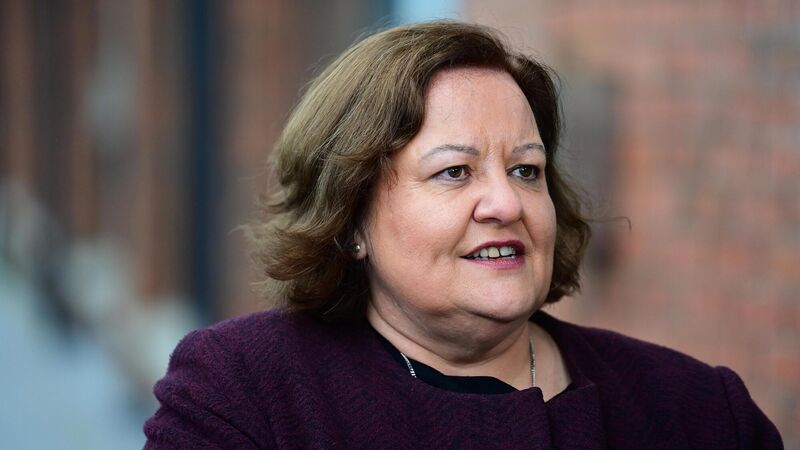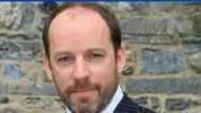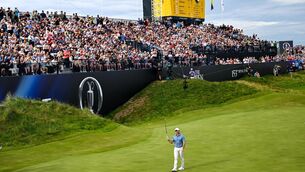Ian Mallon: Curragh chief hits back over PAC claims

QUESTIONED: Suzanne Eade of the HRI.
AT A bruising appearance in front of the Dail Public Accounts Committee (PAC) last week, a number of serious charges were presented against Horse Racing Ireland, around its one-third stakeholding of Curragh Racecourse Limited.
Committee members questioned HRI CEO Suzanne Eade about ‘transparency and full accountability' at the €82m Kildare track, where a “vast amount of public money (had been paid out) on an investment that has gone wrong”.
The committee recorded that increased expenditure and investment at the Curragh was made without anyone being responsible for such oversight, particularly in relation to a €9m ‘loan’ paid to CRL by HRI.
“Who decides that this was a good investment and when it's gone wrong who takes the responsibility?” asked Verona Murphy, TD.
Deputy Murphy also declared that she was “quite concerned” about the appointment of Brian Kavanagh, former CEO at HRI, as the chief executive at the Curragh and that this represented a conflict of interest which “should be prevented going forward”.
In an exclusive interview with The Pitch, Brian Kavanagh responded and disagreed with the claims made, and discussed his own appointment last September, and the process around that.
Firstly he spoke of the issue of recorded ‘losses’ at the racecourse which were declared in HRI’s accounts as €1.8 million incurred in 2020, as well as the 14-month delay in HRI publishing fully audited accounts for the period.
These related to HRI’s investment in Curragh Racecourse Limited, or a cumulative loss to the end of 2020, arising from its investment of €6.4 million, representing almost 28% of the amount invested by HRI in the associate company.
“I think it’s very important to stress that they are not cash losses, they are accounting losses and the biggest factor in that is the depreciation of the building,” explained Kavanagh.
The accounting technicality, he said, is effectively a technical accounting consideration based on a depreciation charge of approximately €4m per year, of whether a reduction in the carrying value of the asset, which is otherwise “cash profitable”, was necessary in the financial statements.
He said that one of the factors in the 14-month delay in the HRI accounts going from draft to fully audited form was that its auditors “weren’t in a position to conclude the HRI accounts until the Curragh accounts were concluded and the issue of the carrying value of the asset was resolved”.
On the investment of public money in the Newbridge racecourse, Kavanagh pointed out that unlike other similar Capital Expenditure projects, financed through public funding, the Curragh was effectively 50 per funded by taxpayers and 50 per cent by investors.
Those private investors are John Magnier’s Coolmore Stud, Moyglare Stud, the Aga Khan, Sheikh Mohammed’s Godolphin operation and JP McManus – who initially put in €5 million each, along with Sheikh Hamdan's Derrinstown Stud.
They invested a further €9m in the project, with Juddmonte Farms and David Power, co-founder of Paddy Power, contributing an additional €1m each to the project, with Moyglare Stud investing €3m to the gallops training facility.
This additional payment by investors and HRI’s subsequent addition of its own €9m ‘loan’ to CRL, Kavanagh said was “to fund the extra cost over what was initially envisaged and the trading situation during the construction years”.
“Maybe €66m was optimistic at the time for a complete rebuild and demolition,” he added.
The racecourse is 33% owned by HRI, 33% owned by the Turf Club and 34% owned by the private investors, so what of the claims that the Curragh is a waste of public money or an investment ‘gone wrong’?
“No, no. It’s an absolutely great investment, I don’t agree it’s gone wrong, there’s challenges like there is with all big projects,” continued Kavanagh.
Turnover forecasted at the race track for this year stands at approximately €8m.
“The Curragh is an important element in terms of not just the racecourse but the training centre. It’s the headquarters of racing in Ireland, it’s our international flagship track.
“While there’s bumps in the road, as there is with any project that’s been achieved ultimately, it’s been achieved at a significantly lower proportionate cost to the state than some other capital projects which are 100% funded.
“Don’t get me wrong, I’m not denying that there were challenges within the project and issues that had to be dealt with.”
One of those issues was the parade ring which was originally built to the wrong specifications at an additional cost of €500k, along with the addition of sewage treatment works ordered by planners.
However, Kavanagh points out that the track, which received no real development since its opening in 1962, is “in the grand scheme of things, and in the long term (of the) investment, great value for money.”
So what of Kavanagh’s appointment as boss of Curragh Racecourse Limited after two decades at the helm of its shareholder operation, HRI, and the alleged conflict that represents?
With his contract up in HRI last year, and unwilling to seek another, Kavanagh said he applied entirely on his own bat, without telling anyone at HRI or without being pushed towards the role by another party.
“No, absolutely not. In fact I told nobody. Suzanne didn’t know I was going for the job until I was announced as the successful candidate,” said Kavanagh.
“The Curragh position came forward when Pat Keogh finished and I applied for it, and went through a rigorous recruitment process,” which he outlined consisted of two interviews, following original selection by the Mazars advisory firm.
“So I went through that process and was successful. The reasons why I was successful, you’d have to ask the board members of the Curragh Racecourse."
THE Rep of Ireland’s recent games against Scotland and Armenia proved the most popular matches of the Nations League campaign, according to figures obtained by The Pitch.
However, the numbers still fall short of all games played in the World Cup qualifiers last year - with the exception of the two games v Azerbaijan.
Perhaps surprisingly, Ireland’s 2-1 loss to Scotland on Saturday evening recorded a far greater audience than the side’s 3-0 victory over the Scots last June – 393k v 345k.
While Ireland’s television numbers for this year, compared with 2021, are down by approximately one-third, this leads to two conclusions.
Either Ireland supporters have less interest in the UEFA Nations League, or the appetite for the international side has waned following inconsistent performances and a scarcity of victories.
For the FAI’s commercial team, still seeking a sponsor for the team, the numbers will offer mixed messages.
While the two games featured as the most watched this year – Armenia on Tuesday enjoyed 356k viewers — they both failed to hit the commercially acceptable 500k+ average audience, most appreciated by sponsors.
The upside of this, and despite growing concern about results and wins, next year’s Euro campaign should offer greater levels of engagement as Ireland battle to qualify for Germany 2024.
Meanwhile, Virgin Media recorded a 155k average for its coverage of England v Germany on Monday evening, giving the channel a 14%share of audience.
Top 10 Most Popular Ireland Matches for 2021/22.
1) Portugal (H) 679k (Average Audience),
2) Portugal (A) 539k
3) Luxembourg (A) 501k
4) Serbia (A) 492k
5) Luxembourg (H) 443k
6) Serbia (H) 423k
7) Scotland (A) 393k
8) Armenia (H) 356k
9) Ukraine (H) 355k
10) Ukraine (A) 351k
***
BOTH Munster and Leinster are set to record break-even financial performances at the end of the current financial year, an incredible set of results in the wake of Covid.
This represents strong business and commercial management at both organisations when you consider the financial calamity being experienced at rival clubs in the English Premiership, surrounding the trials at Wasps and Worcester Warriors.
Both clubs are in dire financial uncertainty with Wasps applying to the High Court in London for administrators to be appointed over an unpaid tax bill, and to protect against legal action from His Majesty’s Revenue and Customs.
Worcester meanwhile have been suspended by the English RFU after failing to provide evidence of insurance cover and proof of funds to complete the monthly payroll.








